Home Standby Generator Installation
How to Install a Standby Generator

Emergency standby generators supply power during an outage. They are permanently connected appliances that operate automatically when the utility power supply is interrupted and begin to supply the home with power just seconds after the outage occurs. Most residential models operate on either natural gas or propane (LP Gas), but diesel-fueled units are available.
The addition of a standby generator to your home is a large project that requires the skills of several trades. A careful, thoughtful approach is necessary to avoid missteps and issues, or even a costly disaster. The first essential steps are taken even before making a decision to purchase and install.
Standby generators represent a substantial investment and cutting corners to save a few dollars will probably end up costing many dollars in the long run. There's no question you can find numerous online forums in which members extol their expertise and detail how they cut corners and saved some money in the process. Such advice isn't worth the liability or the few dollars it may save and you'll rarely hear about the trouble they had later on with code violations and insurance issues.
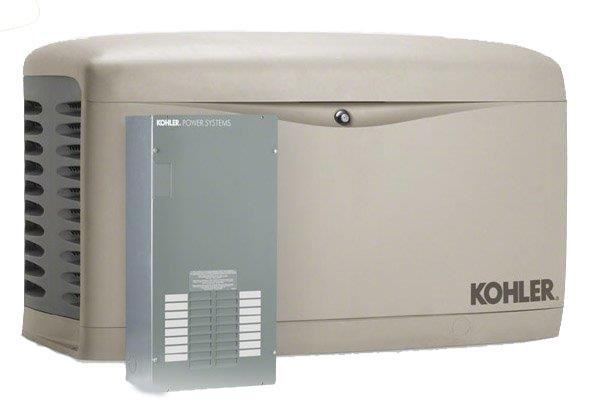
Standby Generator Overview
A residential standby generator system consists of a generator with an electronic controller and an automatic transfer switch. The system monitors the incoming electrical supply lines and when power is lost, they begin a sequence of events that takes just a few seconds to complete.
To avoid starts during momentary outages, the generator has a predetermined delay time before starting. The delay is commonly ten seconds, but may be as little as two seconds or as much as 1500 seconds.
If power is not restored during the wait delay, the engine starts and is allowed to reach full speed. After warm-up—as little as five seconds—the generator signals the automatic transfer switch that it is ready to supply power. The warm-up time is necessary to allow the generator and engine to handle the full load of all the electrical circuits in operation at the time of the outage.
When the generator is ready, the automatic transfer switch disconnects the main utility lines and connects power from the generator. In a whole house system, this includes the entire main service panel. Other transfer switches or configurations may only move specific circuits onto generator power. In either case, the incoming utility lines are isolated from the power produced by the generator. This essential safety feature prevents the generator from energizing the utility lines and endangering line workers who may be working to restore the local power grid.
The time elapsed after the power outage until the standby generator system begins supplying power to the home averages about fifteen seconds, but can be as little as seven seconds. The actual time depends on the equipment and how it is set up.
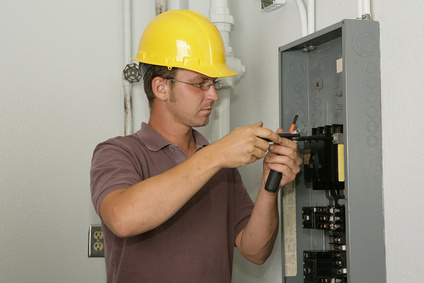
DIY Project vs Contractor
As a do-it-yourself home improvement project, most homeowners are probably not qualified to complete a standby generator system installation on their own. The job requires above-average knowledge of residential electrical systems that goes beyond the average handyman project. There are also plumbing skills to consider and pipe runs for a natural gas or propane connection to the new generator.
Building permits and inspections are required and failure to include this aspect of the install may void your homeowners insurance.
What most homeowners can do is serve as the general contractor and complete steps that are within their capability. A general contractor oversees the project and handles the scheduling of each step whether that step is performed by an outside contractor or by themselves.
Each homeowners must decide what they are capable of and then the building inspector must agree to let them do the work. Subcontractors will perform any work not completed by the homeowners.
Remember: The building inspector can fail the project based on who did the work. If they didn't approve the contractor, including you, they may fail the project and require you to have the work redone by a qualified person.

Choose Your Installation Site
Follow the manufacturer's guidelines for placement. Some units meet fire codes that allow installation as close as eighteen inches from a home, but that does not mean they will meet local codes. Be ready to adjust the position if the building inspector objects.
Note: Outdoor installation only. Standby generators produce carbon monoxide, a colorless, odorless gas that can reach deadly concentrations in just minutes.
Do you have neighbors? Your installation will affect them with noise and exhaust. Minimizing these factors is important. At twenty feet, a quality air-cooled unit makes about as much noise as a central air conditioner. Avoid putting the generator any closer.
Obtain the height and width of the generator from the manufacturer's installation instructions and use them to determine the installation site.
Some general guidelines which may vary by manufacturer or by local building codes include:
- The top of the generator must be at least 60 inches from the roof that overhangs the house.
- The rear corners must be at least 60 inches from any windows or doors that open.
- No part of the generator may be closer than 60 inches from any vent or other opening in the house.
- The sides and front of the generator must be at least 36 inches from any obstruction.
- Each manufacturer specifies the distance from the generator rear to the house.
Locate the generator as close to the gas supply as possible to minimize plumbing costs, but keep other considerations in mind such as exhaust and noise when choosing a site.
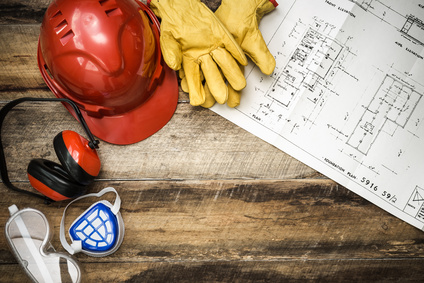
Before Purchase
Ensure that both your homeowners association and the local building department will approve the project. In most cases this is easily accomplished with a couple of phone calls.
Note: Do not purchase any building materials or perform any work until the building department issues your building permit. Verify with the building inspector before purchasing your generator that the unit is acceptable and will pass inspection.
Decide what you want to power with your generator during an outage. You might choose to keep a few essentials operating such as refrigerators, furnaces, and sump pumps along with some lights. Another option adds more conveniences and comforts. At the top end, your home operates as normal without any power-use restrictions. In this step, you are determining how much standby power to buy.
Follow a guide to determine the capacity of the generator you want to install. The guide will help you add up the power requirements of all the appliances you wish to power during an outage and match that total to the correct size generator. Don't skimp. The power needs of any home increase over time and rarely decrease, so add enough reserve to handle future needs.
Talk to your local building department about the project. Ask for suggestions and guidelines. Many departments have information as printed handouts or online documents. Even if there are online guidelines, talk to the building inspector. The conversation may help you avoid pitfalls later on. Let them know what parts of the project you intend to handle yourself and what work you'll be contracting out to tradesmen.
Take a close look at the building inspections required. Each trade will require at least one inspection. Expect an inspection on the pad, the electrical work, and the plumbing work. Some jurisdictions may require rough-in inspections and finished installation inspections.

Interviewing Contractors
Once you know what the building department requires, you can interview subcontractors and accept bids on performing the work. Make a list of the job requirements for each trade and give them to each contractor so that quotes are easily comparable.
Make it clear at the onset that contractors must provide:
- A certificate of general liability insurance.
This certificate provides proof that if the contractor damages your home, or any work they perform damages your home, or they cause injuries or death to anyone in your home, the contractors is covered by insurance. - Copy of the contractor's state or local license.
Not every state or locality requires contractor licensing. Check around to find out what licenses are required, then make sure your contractors have them. - Proof of workers compensation insurance.
Not required for a one-man operation. When a contractor has an employee, he must provide workers compensation insurance in case that worker is injured. Otherwise, a worker can sue you for damages if injured on your property. There's nothing wrong with hiring a contractor that works alone—just make it clear in writing that without the insurance, they can't bring other workers onto your property. - Written lien waver.
Protects you from a lien placed on your home after you've paid for the services. Well respected contractors won't have a problem providing this. Some less-than-reputable contractors will perform work and all seems well, but they present a bill that far exceeds their quoted price. If the homeowners doesn't pay, they levy a mechanics lien on the home. With a waver, you won't be surprised at the end and any additional work required will have your approval before it is performed. - Guarantee statement.
Makes it clear what they will fix if there is a problem and how long that guarantee is good for. If something goes wrong three months after install, will the contractor honor his work and repair the issue, or will you be left holding the bill? - References that you may contact.
Check with references to make sure they exist. Ask about work performed and how satisfied they were. How well did the contractor handle problems that cropped up? Did the contractor show up on time and perform the work on schedule?
Include a statement that they must provide these items or they will not be allowed to start work or be paid for any work performed.
Ask contractors questions about how they work. How is waste disposal handled? What time do they start? What do they do to protect your property (floors, carpeting, walls, paint, etc)?
As a good rule, get at least three quotes from each trade—usually an electrician and plumber, and if necessary, someone to build a pad for the generator to rest on. Qualify tradesmen by their experience: plumbers need experience working with outdoor gas lines and electricians should have experience installing standby generators and transfer switches.
Check with the Better Business Bureau. Although not perfect, their ratings and lists of customer complaints and how businesses deal with them makes them a good resource when hiring a contractor. No one is perfect, but a good rating means they've been in business a while and they handle customer complaints and work to resolve them.
Selecting a contractor based entirely on price is a bad idea. Instead, choose the contractor you feel most comfortable with. If the first three don't satisfy you, call more contractors.
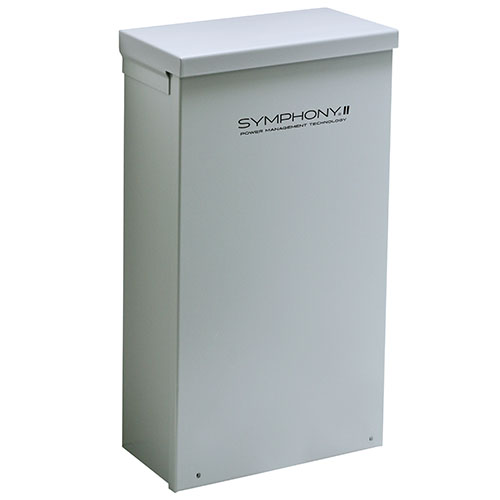
Purchase Decisions
Determine the manufacturer and model generator to purchase. Choose a model that includes enough power to handle current and projected future needs. Many generators are sold as a package with the automatic transfer switch included.
Understand how transfer switches work and the various terminology such as whole house power, service entrance, managed power, and sub panel. Verify that local maintenance is available unless you are capable and willing (and have the time) to do the maintenance work yourself.
At this point, you should have chosen an electrician to perform the work. If you're not entirely confident in your power needs, ask for help. Discuss what you intend to power and be open to suggestions. Talk about the type of unit you wish to purchase and ask if it will meet your needs. Does the transfer switch have the capacity to handle all your requirements?
If your home has municipal natural gas, ask the utility if your gas meter will deliver the required pressure and volume of gas required by the generator. If not, you may need to install a new meter. Homes with LP Gas may need a different regulator to supply the required volume and pressure.
One consideration that many people forget is fuel consumption. The more power used, the more fuel the generator consumes. This is especially important when propane (LP Gas) or diesel fuel from an on-site storage tank is the fuel source. Larger standby generators may need larger fuel tanks for operation during extended outages that last days or weeks.
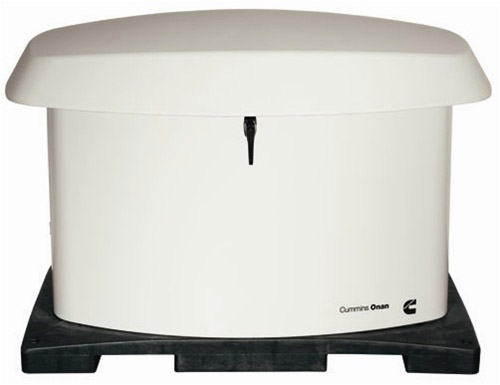
Purchase
Time from purchase to delivery is important so that you can obtain your building permit and schedule tradesmen to complete the install within the building permit's required time frame.
Make your building permit application and have another conversation with the inspector. Mention the tradesmen you plan to hire and gauge the inspector's reaction. Most will not comment directly on any particular contractor, but there might be hints when a contractor has a bad reputation with the inspector.
Don't forget to arrange for help or equipment to move the generator once it arrives. Curbside lift-gate service means the generator is dropped off at your driveway entrance. Before that happens, prepare the installation site for the new generator.
Moving an air-cooled generator will require at least four men for a small unit, and six or more for a large one. Power equipment may be required for liquid-cooled generators.
Finally, purchase the generator you selected and have it delivered. Schedule your tradesmen. With all your trades and help lined up, the waiting is almost over.

After Delivery
By this time, you're anxious to get your new standby generator installed. If you've done all the preliminary work, the remaining tasks should go smoothly.
Move the generator close to the installation site. Have the pad built and the plumbing and electrical rough ins completed. If these need inspections, call the building department and have the inspector check the work. Once they sign off, you can move forward.
Set the generator on the pad and make sure it is level. Each manufacturer provides a specification, but if you're within a half-inch of level across the width and depth, you're probably good to go.
Now the plumber and electrician can complete their work. Once they finish and test the unit, you can call for the final inspections.

Building Inspectors
These folks often get a bad rap for the wrong reason. Their primary job is to ensure your safety and the safety of others that may someday inhabit your home. Something that seems trivial now can turn into a big issue later on.
They are picky and that is a desirable trait when it comes to safety.
A new standby generator installation requires substantial modification of your home's electrical system. Wiring for managed power modules, transfer switches, and new circuit breakers isn't something to take lightly. A picky inspector makes sure these items are installed safely and won't cause problems later on.
Doing it right means everything works, all the time. Doing it wrong means the possibility of fire, electrocution, and substantial liability if someone gets hurt. And, doing it wrong might mean it doesn't work the way it should.
You pay for homeowners insurance, but what good is it if the installation didn't pass inspection and your insurance is voided after a fire or someone is injured. It is the homeowner who is liable and without insurance, you're left holding the bill.
Deal with inspectors by making them a part of the process. When they see you're willing to work with them instead of trying to circumvent them, most will offer useful advice that helps you get the job done safely.
A standby generator system can keep your family and your home safe during extended outages and provide the convenience and comforts you've grown used to having. If you don't have the time or the confidence to serve as your own general contractor, there are plenty of electricians that specialize in installation. Choose one with a good reputation who is willing to work with you to ensure you install a system that will serve your home and family for years.
